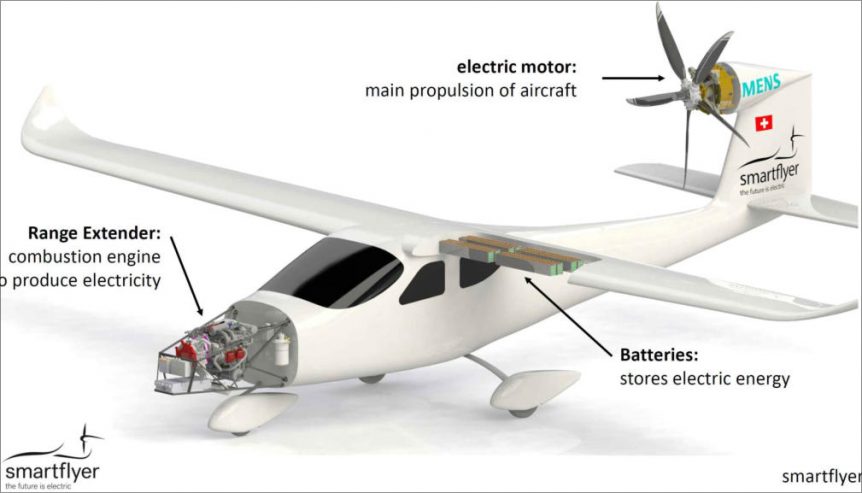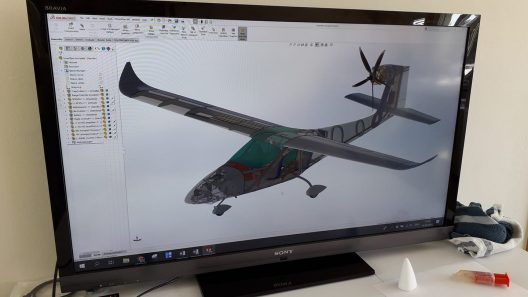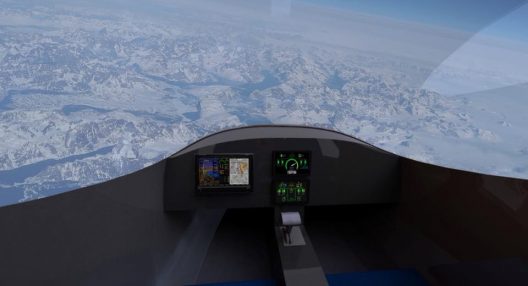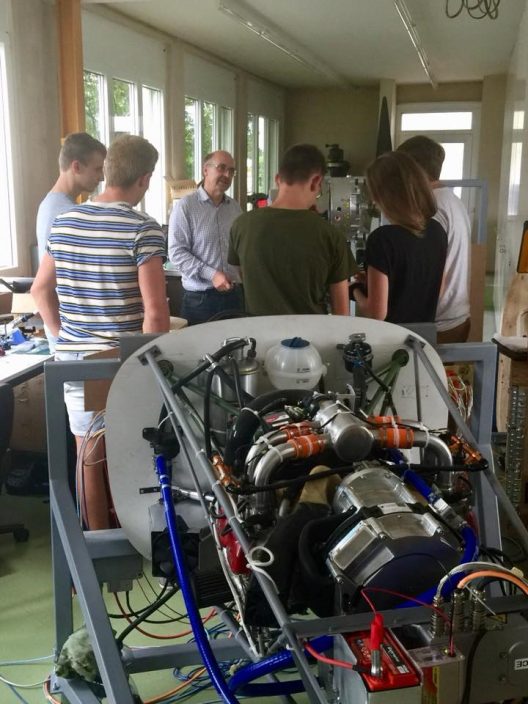Only a design concept just a few years ago, the SmartFlyer hybrid aircraft is swiftly approaching full-fledged reality. CEO Rolf Stuber started the project and has been joined by Daniel Wenger, who shares design honors with him; and eleven others with a dazzling array of skills and degrees. Every member of the team has built, flies or has flown in everything from gliders to “heavy” airliners.
The team’s goal is to craft a “proof of concept” airplane which will fly by 2021.
Facebook Updates
Recent Facebook photographs show a nose section with a Rotax 914 engine driving a special generator, yards of orange cable connecting the big pieces, and a set of formers for what will probably be the fuselage mold.
Pilots and passengers will enjoy a wrap-around view, described on SmartFlyer’s Facebook page thus: “This will be the boundless view for passengers out of the smartflyer in the air. Safety for scanning the airspace by the pilot. It will be quiet in the cabin, no headphones needed and you can speak like inside a car. A real jet-feeling. Let‘s fly into the weekend and into the electric future of aviation.”
Anticipated Performance
Anticipated performance figures seem reasonable. A cruise speed of 120 knots (138 mph) and a range of 500 nautical miles (575 statute miles) are not implausible and probably conservative. With takeoff power of 160 kilowatts (214.5 hp) from its tail-mounted Siemens motor and a takeoff mass of 1,200 kilograms (2,640 pounds) takeoff distance and rate of climb should be similar to aircraft such as Cessna 182’s. The range-extender Rotax should enable the four-hour endurance noted in the specs. The drive motor will cruise at a maximum continuous power of 120 kW, so the banks of batteries stowed in the wings should stay reasonably charged with an unstated reserve and enough oomph for a go-around if necessary.
A Similar Design in Germany
Similar in size and general layout (but with a low, rather than a high wing) Stuttgart University’s Eco 4 incorporates a nose-mounted engine and tail-mounted motor. That configuration had brought e-Genius to a close second-place win in the 2011 Green Flight Challenge, and an outright win in noise category. e-Genius may be the quietest airplane in the world even today. The similarities between e-Genius, Eco 4 and SmartFlyer, and should guarantee success for both four-seaters.
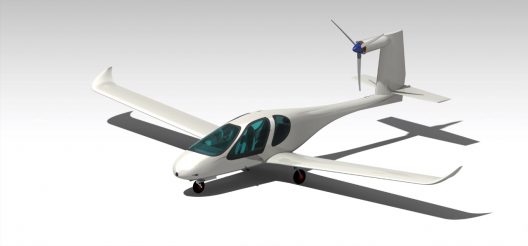
Stuttgart University’s Eco 4. Note high mounting of propeller, Professor Voit-Nitschmann’s way to reduce drag to a minimum on e-Genius
Let’s hope to see SmartFlyer airborne in time for the third SmartFlyer Challenge in 2019 – and maybe a return for e-Genius and a first showing for Eco 4. That would be a great electric airshow.

